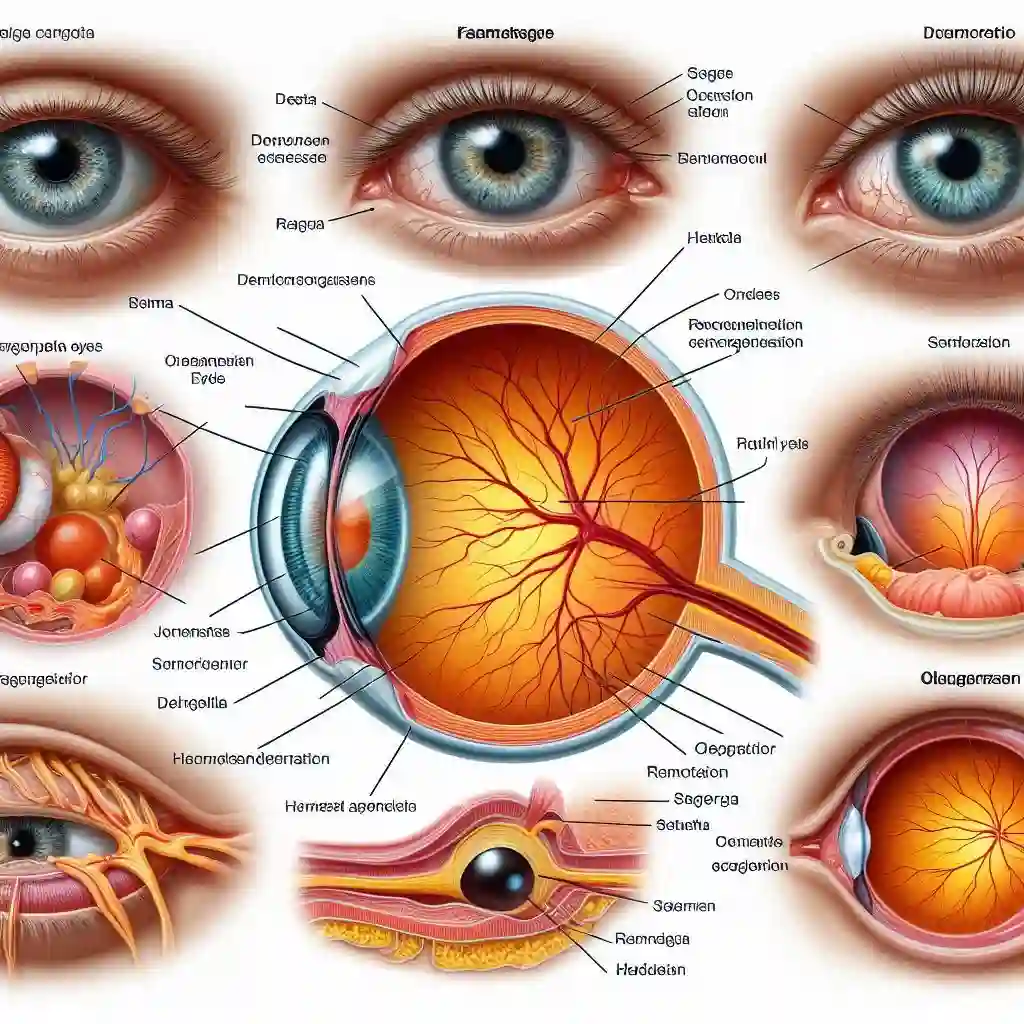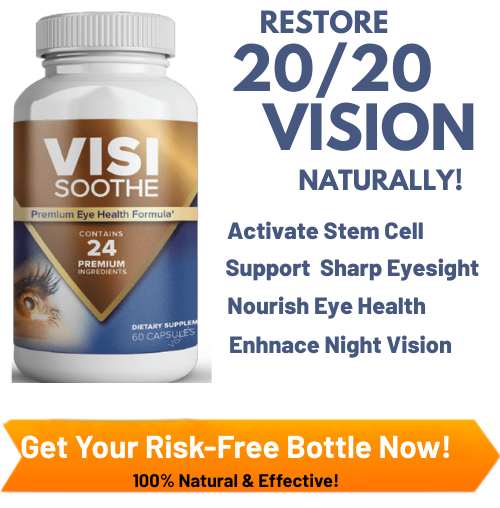Unraveling the Hype: Are 'Stem Cell Pills' the Future of Sight?
Imagine a world where blurry vision, macular degeneration, or even blindness could be reversed with a simple pill. The promise of stem cell vision restoration has captivated many, leading to a surge of interest in innovative treatments.
While the scientific community is indeed making remarkable strides in using stem cell therapy for eye diseases, it's crucial to distinguish between legitimate medical advancements and unproven claims, especially concerning so-called 'stem cell pills.'
This blog post will delve into the exciting potential of stem cells to restore sight, explore the types of therapies currently under investigation, and clarify why the idea of an oral 'stem cell pill' for vision restoration is largely a misconception.
We'll examine the science, the ongoing clinical trials, and what patients need to know to make informed decisions about their eye health.

Understanding Stem Cells: The Building Blocks of Repair
At the heart of regenerative medicine are stem cells, unique cells with the remarkable ability to develop into many different cell types in the body. They serve as an internal repair system, dividing to replenish other cells as long as the person or animal is still alive. In the context of vision, stem cells hold immense promise because many eye conditions involve the damage or loss of specialized cells within the eye.

There are several types of stem cells relevant to ophthalmic research:
Embryonic Stem Cells (ESCs): These are pluripotent stem cells derived from the inner cell mass of a blastocyst, an early-stage embryo. They have the potential to differentiate into any cell type in the body, making them highly versatile for research into regenerating various ocular tissues, including photoreceptors and retinal pigment epithelium (RPE) cells [1].
Induced Pluripotent Stem Cells (iPSCs): These are adult cells that have been genetically reprogrammed to an embryonic stem cell-like state. iPSCs offer a personalized approach, as they can be derived from a patient's own cells, reducing the risk of immune rejection. They are being explored for creating patient-specific retinal cells for transplantation [2].
Adult Stem Cells: Found in various tissues throughout the body, adult stem cells are multipotent, meaning they can differentiate into a limited number of cell types. For the eye, limbal stem cells (found in the cornea) are crucial for maintaining and repairing the corneal surface. Mesenchymal stem cells (MSCs), found in bone marrow and other tissues, are also being investigated for their anti-inflammatory and regenerative properties in eye diseases [3].
CD34+ Stem Cells: These are a type of hematopoietic stem cell found in bone marrow and peripheral blood. They are being studied in clinical trials for conditions like retinitis pigmentosa, with early results showing promise in terms of safety and potential efficacy [4].
How Stem Cells Are Restoring Vision: Beyond the 'Pill' Myth
While the concept of a 'stem cell pill' for vision restoration is appealing, it's important to understand that current legitimate stem cell therapies for eye conditions involve complex medical procedures, not oral supplements. The primary goal of these therapies is to replace damaged or diseased cells, protect existing cells, or create a more favorable environment for cellular repair within the eye.
Here's how stem cells are being used to restore vision:
1. Corneal Repair and Regeneration
The cornea, the transparent outer layer of the eye, is vital for clear vision. Damage to limbal stem cells (LSCs), located at the edge of the cornea, can lead to corneal opacification and severe vision loss. Limbal stem cell transplantation (LSCT) is a well-established and, in some cases, FDA-approved procedure where healthy LSCs are transplanted to the damaged eye. This can involve taking LSCs from the patient's other eye or from a donor. Success rates for LSCT vary but can be significant, with studies reporting overall success rates ranging from 33% to 77% [5, 6].
2. Retinal Diseases: Macular Degeneration and Retinitis Pigmentosa
Many leading causes of blindness, such as Age-related Macular Degeneration (AMD) and Retinitis Pigmentosa (RP), involve the degeneration of photoreceptor cells and/or the Retinal Pigment Epithelium (RPE) in the retina. Stem cell research in this area is highly active, focusing on replacing these lost cells:
Age-related Macular Degeneration (AMD): Researchers are using ESCs and iPSCs to generate healthy RPE cells, which are then transplanted into the eyes of AMD patients. The goal is to replace the diseased RPE cells that support the photoreceptors, thereby preserving or restoring vision. Clinical trials are underway to assess the safety and efficacy of these treatments [7].
Retinitis Pigmentosa (RP): This inherited disease causes progressive degeneration of photoreceptors. Stem cell therapies aim to replace these light-sensing cells or provide neurotrophic support to slow down their degeneration. Clinical trials are exploring the use of various stem cell types, including CD34+ cells and iPSC-derived photoreceptors, to treat RP [4, 8].
3. Optic Nerve Regeneration and Glaucoma
Glaucoma is a group of diseases that damage the optic nerve, leading to irreversible vision loss. While stem cell research for glaucoma is still in earlier stages compared to corneal and retinal therapies, scientists are investigating the potential of stem cells to protect existing retinal ganglion cells (the neurons that form the optic nerve) and to regenerate damaged optic nerve fibers [9].
The 'Stem Cell Pill' Misconception: It's crucial to reiterate that there are currently no scientifically proven or FDA-approved 'stem cell pills' or oral supplements that can restore vision. Products marketed as such are often unproven and can be dangerous.
Legitimate stem cell therapies involve precise surgical procedures and are conducted under strict regulatory oversight, typically within clinical trial settings.
The Regulatory Landscape: FDA Approvals and Clinical Trials
The field of stem cell therapy is rapidly evolving, and regulatory bodies like the U.S. Food and Drug Administration (FDA) play a critical role in ensuring the safety and efficacy of these treatments. It is vital for patients to understand that while research is promising, there are currently very few FDA-approved stem cell therapies for eye diseases.
As of early 2025, the landscape is as follows:
Limited Approvals: The FDA has approved some stem cell-based products, primarily for blood cancers and certain immune disorders, but these are not for eye conditions. For ocular diseases, Holoclar® is a notable exception, approved in Europe for limbal stem cell deficiency, but FDA approval for similar products in the U.S. remains limited [10]. Recently, the FDA approved an encapsulated cell therapy (Encelto) for MacTel type 2, a rare degenerative eye disease, marking a significant step forward [11, 12].
Ongoing Clinical Trials: The majority of legitimate stem cell therapies for vision restoration are still in the clinical trial phase. These trials are essential for rigorously testing the safety and effectiveness of new treatments. Patients interested in these therapies should look for trials registered with official bodies like ClinicalTrials.gov [13]. Participating in a clinical trial can offer access to cutting-edge treatments under controlled, ethical conditions.
Caution Against Unproven Therapies: Despite the strict regulatory environment, many clinics worldwide offer unproven and unapproved stem cell treatments for eye conditions, often at high costs and with significant risks. These clinics frequently operate outside established medical guidelines and may expose patients to serious harm, including permanent vision loss, infection, and even blindness [14, 15].
The FDA has issued warnings against such unproven therapies, emphasizing that patients should be wary of treatments offered outside of clinical trials or without proper regulatory approval.
The Future of Vision Restoration: Hope and Responsibility
The promise of stem cell therapy for vision restoration is undeniable. Researchers are tirelessly working to unlock the full potential of these remarkable cells to combat a wide range of debilitating eye diseases.
From repairing damaged corneas to regenerating lost retinal cells, the scientific advancements are bringing us closer to a future where blindness may no longer be an irreversible condition.
However, it is crucial for individuals seeking these therapies to exercise caution and critical thinking. The allure of quick fixes, such as unproven 'stem cell pills,' can lead to significant financial and health risks. Always prioritize treatments that have undergone rigorous scientific testing and have received appropriate regulatory approval.
Consult with ophthalmologists and medical professionals who can provide accurate information about legitimate clinical trials and established treatment options.
By staying informed and relying on credible scientific sources, we can collectively support the responsible development and application of stem cell therapies, ensuring that the hope for restored vision becomes a safe and accessible reality for those who need it most.
References
[1] EuroStemCell. (n.d.). The eye and stem cells: the path to treating blindness. Available at: https://www.eurostemcell.org/eye-and-stem-cells-path-treating-blindness
[2] Fighting Blindness Canada. (n.d.). Stem Cell Therapy & Clinical Trials to treat Vision Loss. Available at: https://www.fightingblindness.ca/resources/stem-cell-therapy-for-vision-loss/
[3] ScienceDirect. (n.d.). Review Regenerative treatment of ophthalmic diseases with stem cells. Available at: https://www.sciencedirect.com/science/article/pii/S266737622400009X [4] UC Davis Health. (2024, November 26). Early-stage trial finds stem cell therapy for retinitis pigmentosa is safe. Available at: https://health.ucdavis.edu/news/headlines/early-stage-trial-finds-stem-cell-therapy-for-retinitis-pigmentosa-is-safe/2024/11
[5] PMC. (2020, April 23). Outcomes of Limbal Stem Cell Transplant: A Meta-analysis. Available at: https://pmc.ncbi.nlm.nih.gov/articles/PMC7180742/
[6] ScienceDirect. (2023, December 4). Comparative analysis of long-term results of three epithelial cell transplantation techniques for limbal stem cell deficiency. Available at: https://www.sciencedirect.com/science/article/pii/S154201242400003X [7] National Eye Institute. (2024, December 5). Clinical Trial Highlight: Stem Cell Transplants for Dry AMD. Available at: https://www.nei.nih.gov/learn-about-eye-health/eye-conditions-and-diseases/age-related-macular-degeneration/clinical-trial-highlight-stem-cell-transplants-dry-amd
[8] Fighting Blindness. (2020, October 20). RP Treatment Derived from Induced Pluripotent Stem Cells Advances into Clinical Trial. Available at: https://www.fightingblindness.org/news/rp-treatment-derived-from-induced-pluripotent-stem-cells-advances-into-clinical-trial-774
[9] Glaucoma.org. (n.d.). Stem Cell Therapy For Glaucoma - Are We There Yet?. Available at: https://glaucoma.org/articles/stem-cell-therapy-for-glaucoma-are-we-there-yet
[10] EuroStemCell. (n.d.). The eye and stem cells: the path to treating blindness. Available at: https://www.eurostemcell.org/eye-and-stem-cells-path-treating-blindness
[11] ASGCT. (2025, March 17). FDA Approves Encapsulated Cell Therapy for Degenerative Eye Disease. Available at: https://www.asgct.org/Publications/News/March-2025/Encelto-Cell-Therapy-Degenerative-Eye-Disease
[12] AABB. (2025, March 12). FDA Approves First Cell Therapy for Rare Eye Disease. Available at: https://www.aabb.org/news-resources/news/article/2025/03/12/fda-approves-first-cell-therapy-for-rare-eye-disease
[13] ClinicalTrials.gov. (n.d.). Stem Cell Ophthalmology Treatment Study. Available at: https://clinicaltrials.gov/study/NCT01920867
[14] American Academy of Ophthalmology. (2019, June 4). Stem Cell Therapy for Eye Disease: What You Need to Know. Available at: https://www.aao.org/eye-health/tips-prevention/stem-cell-therapy-eye-disease-facts
[15] Ophthalmology Times. (2022, October 30). Misinformation rampant about unapproved stem cell therapies. Available at: https://www.ophthalmologytimes.com/view/misinformation-rampant-about-unapproved-stem-cell-therapies
Disclaimer: The information presented in this blog post is intended for informational purposes only and should not be considered medical advice. While we strive to provide accurate and up-to-date information, it is not a substitute for professional medical guidance. Always consult with a qualified healthcare professional before making any decisions related to your health or treatment.
We strongly encourage you to seek the advice of a physician or other qualified healthcare provider with any questions you may have regarding a medical condition or treatment. Never disregard professional medical advice or delay seeking treatment because of something you have read in this blog post.
You Might Also Like

